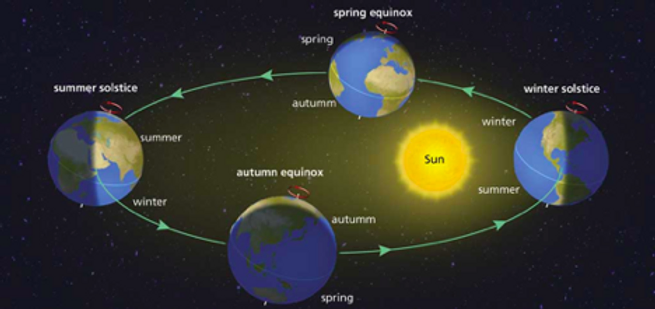All-natural phenomena are correlated with each other in complex ways, so one wonders how our ecosystem and body are related? Being a part of the ecosystem, the human body is greatly influenced by the external environment.Many of the exogenous and endogenous rhythms have specific phase relationships with each other; which means they interact and synchronize with each other. Considering and understanding this rhythm, Ayurveda has explained the concept of Rutucharya uniquely.
Rutu (ऋतु), the season, classified by different features expresses different changes in environment and body. Ayurveda has depicted various rules and regimens known as Charya (चर्या), regarding diet and behavior to acclimatize seasonal enforcement easily without altering body homeostasis. This is aunique feature that Ayurveda offers to prevent the loads of diseases coming from change in season.

The year according to Ayurveda is divided into two periods (अयन), depending on the direction of movement of sun that is Uttarayana (northern solstice) and Dakshinayana (southern solstice). Each is formed of three Rutus (seasons). A year consists of six seasons, namely, Shishira (winter), Vasanta (spring), and Grishma (summer) in Uttarayan and Varsha (monsoon), Sharada (autumn), and Hemanta (late autumn) in Dakshinayana.
Dakshinayana starts with Varsha rutu or Monsoon, in particular the tropical belt, when the climate is humid, wind is colder and the moon is more powerful than the sun. The strength of a person gradually increases from varsha rutu to sharad to hemant during the dakshinayana period. Here, anabolic activity dominates over the catabolic activity in the environment.

Research shows that seasonal flu imposes a substantial burden among all the people in India. The frequency of illness shows an association between diseases and seasonal changes. The human body normally shows a slow response while adapting to the changes in this season. The period between the last 7 days of the current season and 7 days of the upcoming season is always considered crucial. This period is known as Rutusandhikaal or considered as a transition period. It is called Yamadanshtra (bites of God Yama i.e. having maximum infestation rate ) by Ayurveda. Seasonal changes are always associated with changes in temperature, humidity, moisture. The shift in temperature provides an apt condition for different groups of viruses to flourish, which then spreads contagious diseases. This period is hence very susceptible for infections. Less immunity, less strength and symptoms associated with adaptation to changing seasons may favor the spread of diseases causing two or more health complaints together. Load on the healthcare system can be reduced by adapting the simple way of Rutucharya.
Digestive fire, metabolic health and strength are three main factors associated with a change in season. If the body is unable to adapt itself to stressors due to changes in specific traits of seasons, it may lead to an imbalance between Doshas where the body becomes highly susceptible to various disorders. We can minimize this by introducing good adaptation by implementing Rutucharya.
Western countries also suffer a burden of diseases due to seasonal changes. We can define the Rutucharya for those people by observing the characteristics of the season and its impact on the human body. This will be the application of core knowledge of Ayurveda for the betterment of life. Broadly we can classify 5 regions in the world. 1. Europe 2. America 3. Asia 4. Australasia 5. The Middle East and Africa. Some of them are having 2 seasons and some are having 4 seasons. Applying the concept of Rutucharya, one can easily design the required diet and lifestyle.
In the next article, we will focus on Agni (digestive fire) during the monsoon season. Diet correction and lifestyle modification required to maintain balance will also be explained. As monsoon is the season of festivals, we will brief about the food recommendations and also the necessities of customs like fasting. We will explore the ideal regime for balancing the metabolic index of the body during Monsoon in the next article.
Stay tuned to our series. Wishing a happy and safe monsoon to readers.
Author:
Dr. Gayatri Kulkarni – Mulye
MD (Ayurved)
Blogger @ Turyaa Wellness




